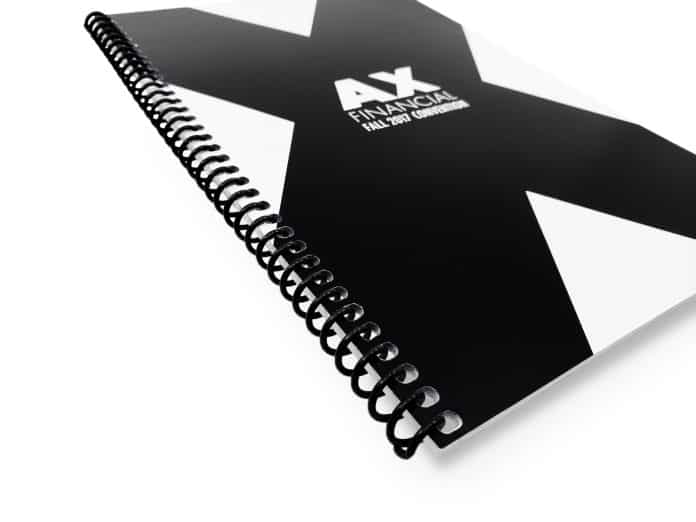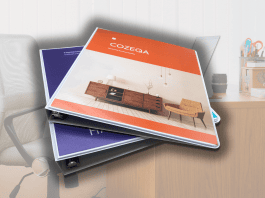Last updated on June 20th, 2024 at 10:35 am
Whether you’ve written a beautiful story or perfected your latest project, you’ve worked hard to make sure everything comes together seamlessly. Your binding should too.
One of the most effective and durable book binding options is the plastic comb binding. Versatile and strong, this is a great option for books, booklets and projects of any kind. In this article, we’ll discuss plastic comb bindings, why they’re a good choice, and how to design books and booklets with this type of binding.
What is Plastic Comb Binding Used For?
First, let’s define plastic combs. A comb plastic book binder seals a softcover book or booklet together with a series of curved tines in rectangular holes. A standard 8.5 by 11 inch size booklet will typically have nineteen rings. This type of binding is simultaneously professional yet casual and is commonly used for nonfiction materials such as projects, manuals, and so on. However, plastic comb bindings are also great for creative projects like novels, plays, scripts and portfolios.

At first glance, plastic comb bound books look similar to spiral bound books. But unlike spiral spines, comb bindings have a flat underside – just as a hair comb has a solid edge that anchors the teeth. The combs can open and close, allowing you to add pages as needed. Or, use perforated pages to easily tear them off for a workbook.
Although this type of binding is also commonly used for no-nonsense and no frills materials, it is also a great fit for interactive workbooks, cookbooks, and children’s books. While they tend to have a professional air to them, there is room for creativity in the design of these books.
Plastic comb bindings are popular for professional documents like manuals, presentations, and educational materials. Why? Not only is this binding method cost-effective and flexible, a plastic comb book is easy to flip through. Once open, a book bound this way stays open – great for presentations and classes. It will lie flat on a table so you can be hands-free as you reference it or write in it. That means engineers can tinker with their projects as they read instructions, teachers can type lesson plans as they read from it, and employees can pay attention during presentations or meetings without having to worry about losing their place.
The Benefits of Plastic Comb Binding
Designers choose plastic combs for binding for a number of reasons. First, plastic binding is cost-effective. Second, it is quite durable (plastic won’t tear, rip or fray like many book bindings). When you opt for plastic comb binding, you don’t have to worry about your book falling apart or disintegrating as it ages. For example, imagine hardcover books that are bound by glue. Over time, no matter how heavy-duty the glue is, it will dry up eventually, causing the book to become very delicate. But plastic binds are built to last.
Lastly, plastic binding combs give you more options for color and design. Choose a color binding to complement your cover colors. Also, you’re able to choose between different binder combs sizes. For example, a thicker binding will support a larger book. Thinner plastic comb bindings are perfect for booklets like instruction manuals, shorter presentations, and creative portfolios. The diameter of each comb may be up to two inches for very large books, and as small as a fourth of an inch for small booklets.

Tips for Designing Booklets with Plastic Comb Binding
So, how do you design booklets with plastic binding? One method is to coordinate the colors of the binding to the colors on the cover. Match an understated black binding to a black cover, or choose a white binding to go with the white font on the cover.
Remember to consider the associations people have with colors: use neutrals for professional settings, bright colors for kids, Christmas colors for the holidays, etc. Bright colors like neon yellow or hot pink will grab attention, but aren’t appropriate for all contexts.
Be careful of your cover page’s margins: the binding combs will take up some space – typically less than an inch. If you do an intricate design on the cover page, leave space along the binding edge. You can still align your text and images to the left as long as you leave a margin. Printivity offers detailed design templates for designers to verify their covers are designed properly.
For a professional booklet such as a manual or presentation, keep it simple and straightforward. Make sure to include the company logo, a description of the booklet, and your name. Don’t overcrowd the cover with too much text or color — people should be able to glance quickly at the cover and know exactly what’s inside.
If you have more room for creativity, incorporate designs and colors on your cover. For example, portfolios can use a color gradient featuring a slow and subtle change in color over the course of the cover. Do so in a color that makes sense for your material and reflects the contents. Keep in mind that cool colors like green and blue promote feelings of calm, whereas warm colors like red, yellow, and orange promote feelings of passion.
Customize Your Booklet with Printivity
Whatever type of binding you choose for your project, the team of experts Printivity is ready to help you through the process. Choose your binding, send us your cover design, and get your book printed. Take the first step in making your latest project a reality. Request a quote and find your Perfect Bound Book Printing today!





